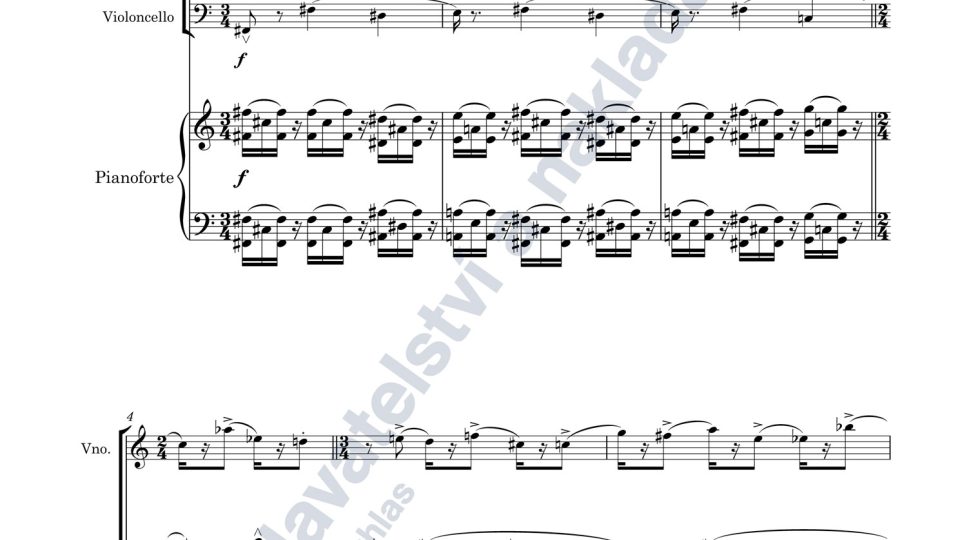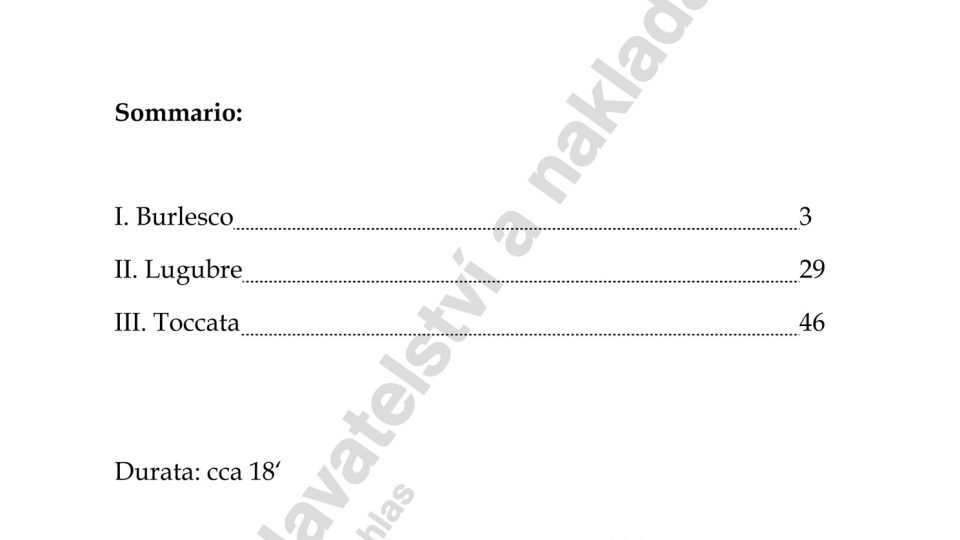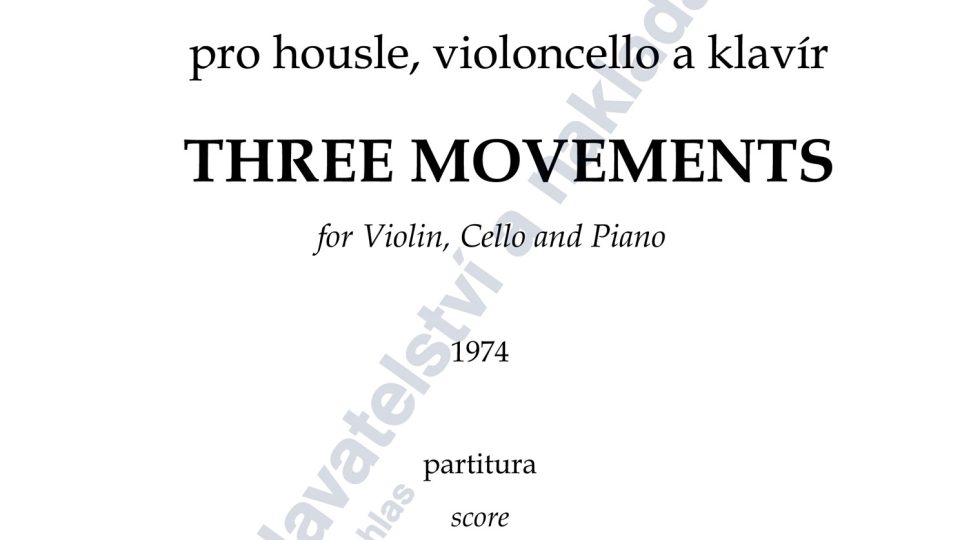Three Movements for Violin, Cello and Piano - Jiří Jaroch
Three Movements for Violin, Cello and Piano is the only Jaroch’s composition for a piano trio.
He devoted it to the „Memory of the friend Vladimír Fidrmuc, an enthusiastic cellist of our “Kolín quartet – the quartet of my youth“, as he states on the front page of his manuscript that also served as the source for this edition. Jaroch worked on the score since February 1972 and he finished it on January 13, 1974. In September of the same year, the composition was recorded in the Czech radio by Foerster trio, with Stanislav Srp playing the violin, Václav Jírovec playing the cello and Aleš Bílek playing the piano. Director was the author himself.
In the eighteen-minute long composition, Jaroch claims allegiance to the musical modernism of the 20th century. He lets the audience remember e.g. Bartók’s string quartets, Dmitri Shostakovich’s chamber compositions or e.g. Ervín Schulhoff. This inspiration is obvious in the first and the last movement (Burlesco, Toccata) where a tense dramatic character prevails with spontaneous rhythmical movement in the melody and accompaniment, using the technical possibilities of all the three instruments.
The core of the musical testimony is in the dreary second part Lugubre (darkly/gloomily). First, the violin and the cello stand out in a slow pace, with the piano supporting them “vaguely“. The middle part of this movement goes back to the dramatically pointed character of the introductory part. In terms of consonance, particularly in the second movement, the composer often uses bitonální plochy, sometimes he even gets close to atonality. In the end of the third movement, Toccata, we can hear the reminiscence of the second part as a distant catharsis. However, the finale belongs to the energetic Presto where the whole trio gives their best in the masterfully composed part.
Other compositions by Jiří Jaroch published in Czech Radio:
Children's Suite for Nonet




